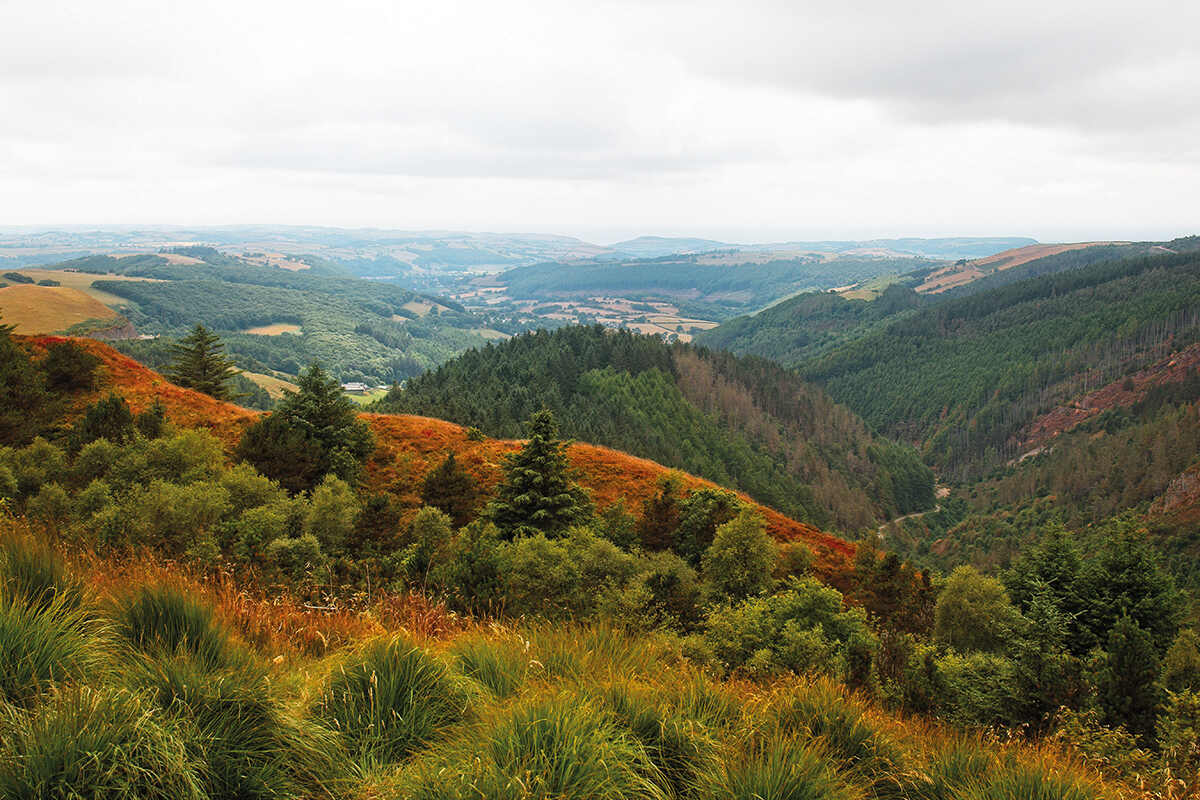
In this edited extract from his new book, Return to My Trees, Matthew Yeomans reflects on the National Forest for Wales initiative, which was launched in the spring of 2020, and asks whether it can help reconnect fragmented Welsh communities
Coed Cwm Einion, situated a mile or so inland of the vast Dyfi estuary on the west coast of Wales, felt completely different to most of the woods I’d encountered so far. Later, I would learn that I had descended into one of the best examples of something called Tilio-Acerion woodland. Here, small-leaved lime trees grew in the rocky sites of the ravine and shared space with ash and weeping wych elm. It was also home to other ancient semi-natural mixed broad-leaved woodland such as sessile oak, rowan and downy birch. Together, these trees provided a home to a rich mix of biodiversity. These included 177 species of lichen (including the very rare Parmotrema robustum, which looks like a cross between kelp and some lettuce that you’ve left in the bottom of the fridge for too long) and more than 150 species of moss and liverwort. Lichen is often referred to as the coral of the rainforest, such is its importance in supporting biodiversity.
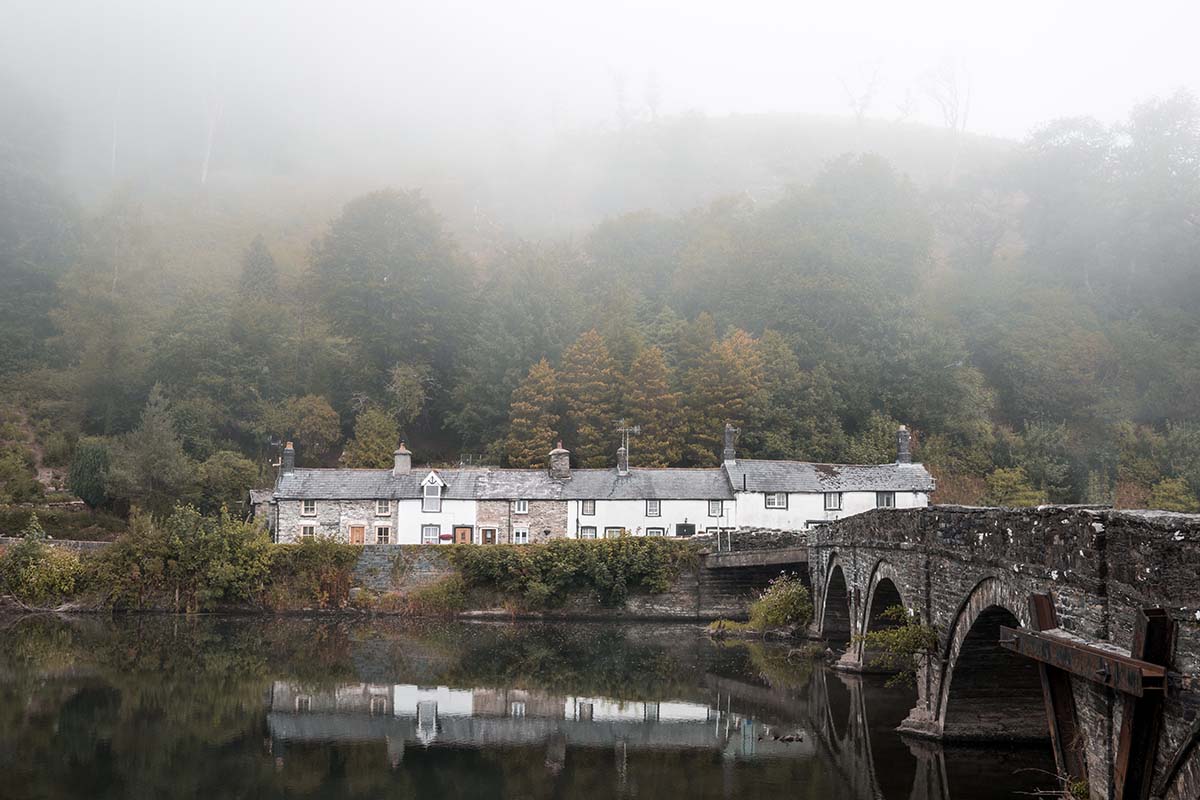
Amid this tapestry of ancient trees and the plant life below them, the Einion River rushed through, bubbling and breaking into white foam as it encountered the many rocks and boulders in its path. Some of the larger oaks had grown and twisted until they almost touched their neighbours on the other side of the river in a surrealist guard of honour.
Cwm Einion looked majestic and magical to my untrained eye, but it was slowly being nursed back to health after many decades of neglect, overgrazing and a concerted attack by invasive species that bully the natural ecology (Rhododendron ponticum being a major culprit). The woodland is part of a £7 million multi-year ancient forest conservation and restoration initiative. And it’s a prime example of the type of woodland that the new National Forest for Wales aims to nurture and protect.

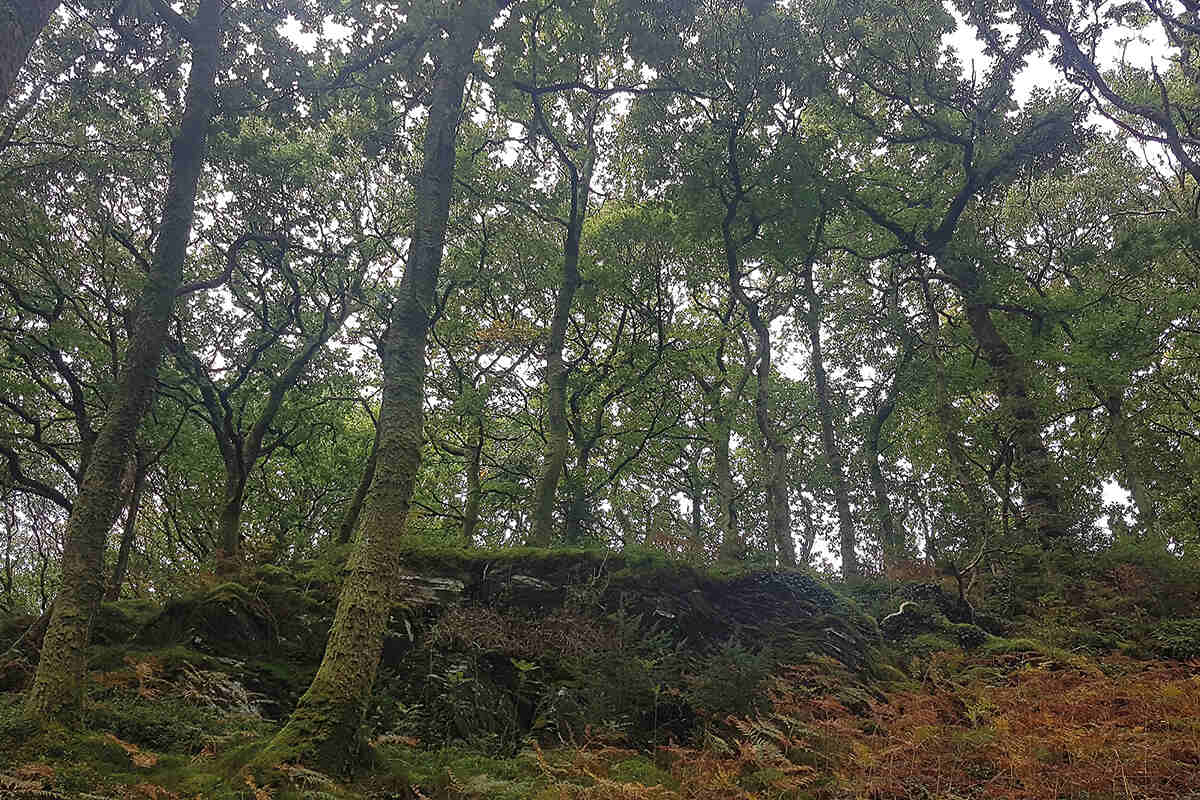
The National Forest initiative was launched in the spring of 2020 as a bold strategy to embed an appreciation of nature and biodiversity at the very heart of what it means to be Welsh. The plan involves planting new Welsh forests and restoring ancient woodlands, with an emphasis on nurturing native deciduous trees, breathing new biodiversity life into the hedgerows that line the countryside and working with the farming community to improve tree cover on their land.
It also aims to educate communities and schools about the importance of nature and to create a network of walks, trails and paths that will connect people to the forests and woodlands of Wales – some huge expanses, such as Wentwood, Brechfa and Bwlch Nant yr Arian, along with other small woods, like here in Cwm Einion.
It couldn’t have come at a more important time for the country. Even as the Welsh government was pledging £15 million over the next five years to bring the National Forest idea to life, its own State of Natural Resources annual report was sounding the alarm – warning that Wales was using up its natural resources, including rivers, forests and farmland, at a completely unsustainable rate. If everyone on Earth used natural resources at the same rate as people in Wales, two and a half planets would be needed.
As I walked through this ancient woodland, I started to contemplate whether the National Forest could also help forge a new sense of national identity – one built upon reconnecting the people of Wales to nature.
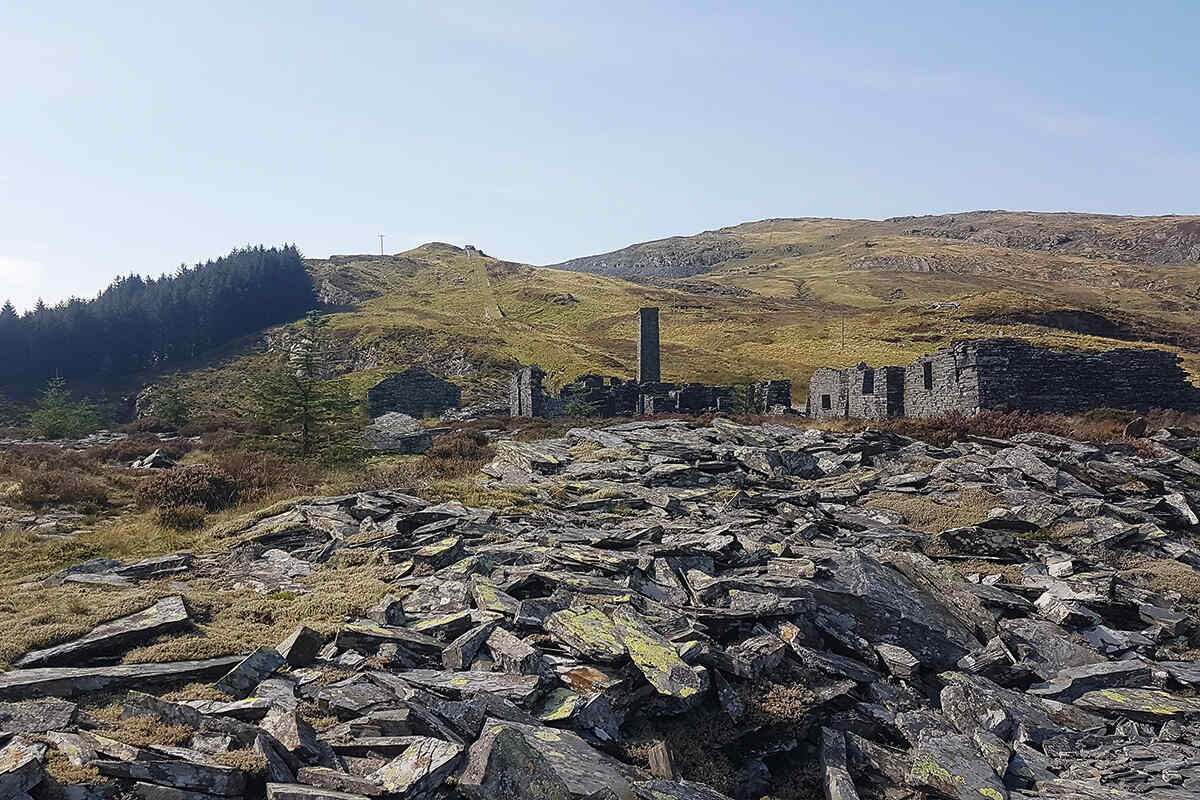
To outsiders, it might seem that Wales already has a strong national identity, given how proud most of us are about being Welsh. In reality, Wales is a disconnected nation in many ways. We have a national language but it’s spoken by a minority of the population, having suffered centuries of neglect – sabotage even. We’re disconnected geographically due to woeful transportation infrastructure, as anyone who has to travel regularly between the north and south knows. The political centre of power, the Senedd, is located in the capital city of Cardiff in the south, but many people in north Wales likely identify more with the nearby English cities of Liverpool and Manchester.
There is a precedent for what might at first seem a far-fetched idea. In 1994, Costa Rica enshrined into its constitution the right of ‘every person […] to a healthy and ecologically balanced environment’. This built on a decision taken a decade before to stop the reckless destruction of Costa Rica’s tropical rainforest by investing in large-scale afforestation and forest-restoration schemes. Since then, Costa Rica has also shaped its economy and its global image around environmentally conscious tourism – putting the appreciation of nature at the very heart of its national identity. Ticos (as native Costa Rican’s call themselves) even adopted a phrase – pura vida (‘pure life’) – to describe this national sensibility.
Other nations are also taking steps to put the protection of nature at the heart of policy, law and culture. In 2008, the government of Ecuador added new articles into its constitution called the Rights of Nature Ecuador. Based on the sumac kawsay (‘good living’) worldview of the country’s Quechua indigenous people, the laws recognised the inalienable rights of Pachamama (Mother Earth), gave people the authority to petition on behalf of nature and required the government to address violations of these rights. In 2021, the country’s highest court ruled that plans to mine for copper and gold in a protected cloud forest were unconstitutional because they violated those rights of nature.
In New Zealand, the Māori nation worked with the federal government to secure legal rights for the Whanganui River. By doing so, it helped to reassert the traditional Māori worldview that the land can’t be owned by any human. And in Colombia, the Supreme Court has declared the Amazon jungle to be a legal person with rights − to be protected, conserved and restored − and ordered the state to reduce deforestation. The case was brought by 25 children and to protect their future rights the court set up an ‘intergenerational pact’ for the rainforest.
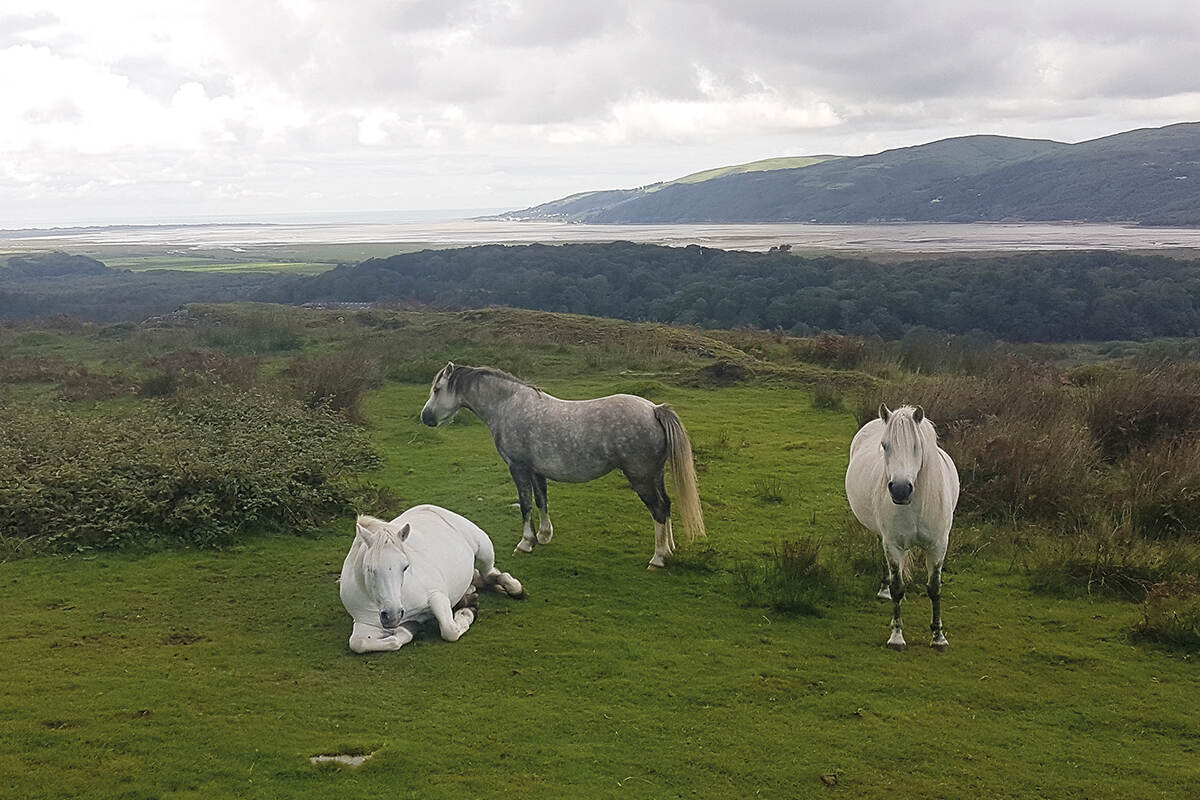
The Rights of Nature movement is a direct challenge to the centuries-old commoditisation of nature and the concept that humans have ownership of it. It also embraces the greater sustainability philosophy that humans must integrate the needs and well-being of nature into their systems – be they legal, political, or economic – if future generations are going to survive.
In 2015, the Welsh government did just that when it passed the Well-being of Future Generations Act. The act put the sustainable development of the economy and community at the heart of policymaking. Crucially, it required all public bodies to account for their impact on future generations that will have to live with the consequences, asking them to consider decisions not just from an economic-growth point of view but also in terms of their impact on the environment and nature, and on the social well-being and health of communities.
The framework, then, for shaping a national identity underpinned by achieving balance with nature already existed. And, as I’d seen by walking through my country, this beautiful land had untapped potential to inspire its own people and visitors. I was convinced that the National Forest for Wales could reconnect Welsh communities to the forests, mitigate carbon emissions and open a new chapter in Welsh tourism. Most radical of all, it could help the nation prosper while living within its natural means.




